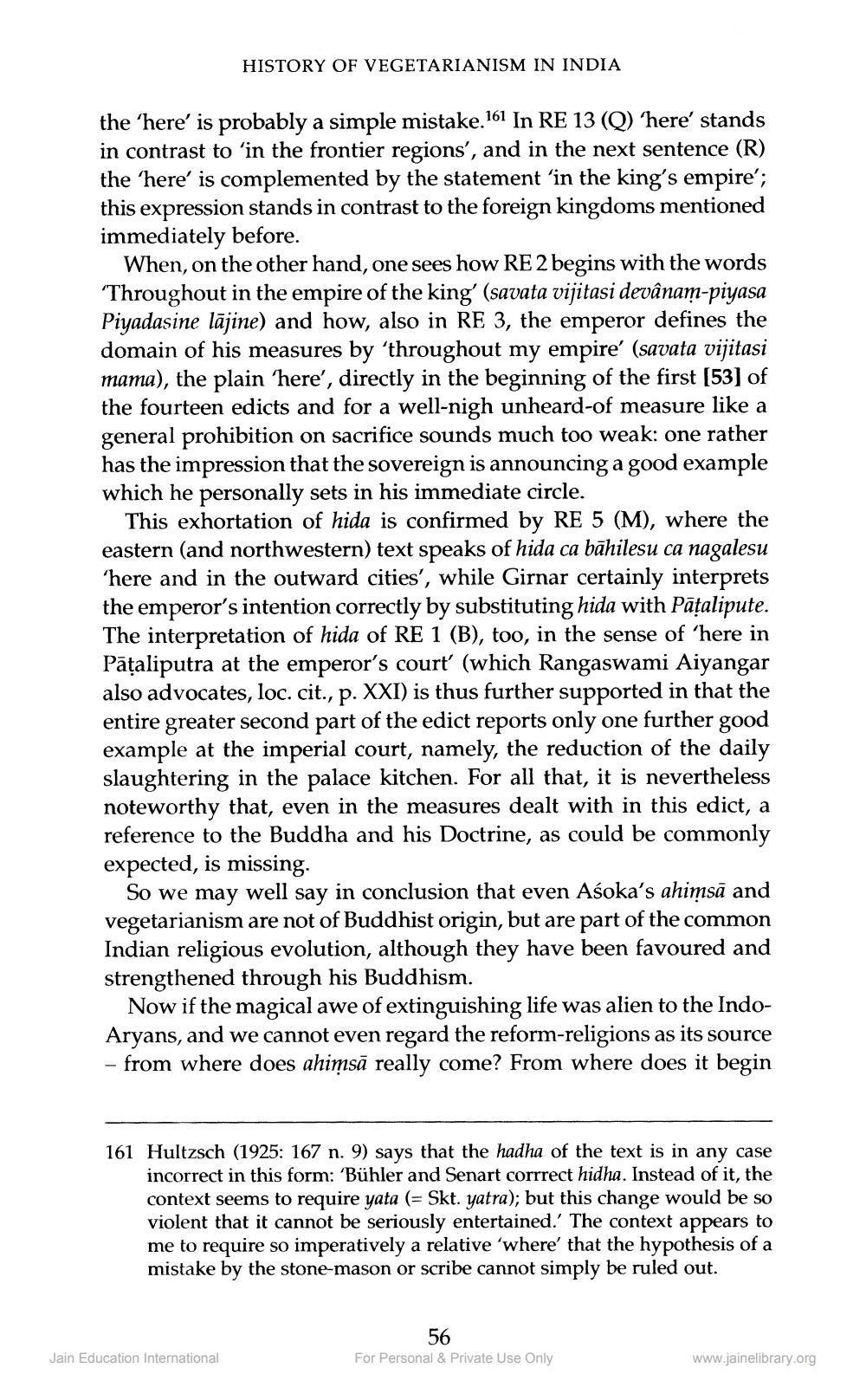________________
HISTORY OF VEGETARIANISM IN INDIA
the 'here' is probably a simple mistake. 161 In RE 13 (Q) “here' stands in contrast to 'in the frontier regions', and in the next sentence (R) the 'here' is complemented by the statement 'in the king's empire'; this expression stands in contrast to the foreign kingdoms mentioned immediately before.
When, on the other hand, one sees how RE 2 begins with the words Throughout in the empire of the king' (savata vijitasi devânam-piyasa Piyadasine lājine) and how, also in RE 3, the emperor defines the domain of his measures by 'throughout my empire' (savata vijitasi mama), the plain 'here', directly in the beginning of the first (53] of the fourteen edicts and for a well-nigh unheard-of measure like a general prohibition on sacrifice sounds much too weak: one rather has the impression that the sovereign is announcing a good example which he personally sets in his immediate circle.
This exhortation of hida is confirmed by RE 5 (M), where the eastern (and northwestern) text speaks of hida ca bāhilesu ca nagalesu 'here and in the outward cities', while Girnar certainly interprets the emperor's intention correctly by substituting hida with Pāțalipute. The interpretation of hida of RE 1 (B), too, in the sense of 'here in Pataliputra at the emperor's court' (which Rangaswami Aiyangar also advocates, loc. cit., p. XXI) is thus further supported in that the entire greater second part of the edict reports only one further good example at the imperial court, namely, the reduction of the daily slaughtering in the palace kitchen. For all that, it is nevertheless noteworthy that, even in the measures dealt with in this edict, a reference to the Buddha and his Doctrine, as could be commonly expected, is missing.
So we may well say in conclusion that even Aśoka's ahimsā and vegetarianism are not of Buddhist origin, but are part of the common Indian religious evolution, although they have been favoured and strengthened through his Buddhism.
Now if the magical awe of extinguishing life was alien to the IndoAryans, and we cannot even regard the reform-religions as its source - from where does ahimsā really come? From where does it begin
161 Hultzsch (1925: 167 n. 9) says that the hadha of the text is in any case
incorrect in this form: 'Bühler and Senart corrrect hidha. Instead of it, the context seems to require yata (= Skt. yatra); but this change would be so violent that it cannot be seriously entertained. The context appears to me to require so imperatively a relative 'where that the hypothesis of a mistake by the stone-mason or scribe cannot simply be ruled out.
56 For Personal & Private Use Only
Jain Education International
www.jainelibrary.org




